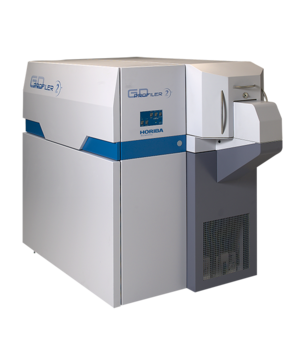
SmartSPM Scanner and Base
Sample scanning range: 100 µm x 100 µm x 15 µm (±10 %)
Scanning type by sample: XY non-linearity 0.05 %; Z non-linearity 0.05 %
Noise: 0.1 nm RMS in XY dimension in 200 Hz bandwidth with capacitance sensors on; 0.02 nm RMS in XY dimension in 100 Hz bandwidth with capacitance sensors off; < 0.04 nm RMS Z capacitance sensor in 1000 Hz bandwidth
Resonance frequency: XY: 7 kHz (unloaded); Z: 15 kHz (unloaded)
X, Y, Z movement: Digital closed loop control for X, Y, Z axes; Motorized Z approach range 18 mm
Sample size: Maximum 40 x 50 mm, 15 mm thickness
Sample positioning: Motorized sample positioning range 5 x 5 mm
Positioning resolution: 1 µm
AFM Head
Laser wavelength: 1300 nm, non-interfering with spectroscopic detector
Registration system noise: Down to < 0.1 nm
Alignment: Fully automated cantilever and photodiode alignment
Probe access: Free access to the probe for additional external manipulators and probes
SPM Measuring Modes
Contact AFM in air/(liquid optional); Semicontact AFM in air/(liquid optional); Non -contact AFM; Phase imaging; Lateral Force Microscopy (LFM); Force Modulation; Conductive AFM (optional); Magnetic Force Microscopy (MFM); Kelvin Probe (Surface Potential Microscopy, SKM, KPFM); Capacitance and Electric Force Microscopy (EFM); Force curve measurement; Piezo Response Force Microscopy (PFM); Nanolithography; Nanomanipulation; STM (optional); Photocurrent Mapping (optional); Volt-ampere characteristic measurements (optional)
Spectroscopy Modes
Confocal Raman, Fluorescence and Photoluminescence imaging and spectroscopy
Tip-Enhanced Raman Spectroscopy (TERS) & Tip-Enhanced Photoluminescence (TEPL) in AFM, STM, and shear force modes
Near-field Optical Scanning Microscopy and Spectroscopy (NSOM/SNOM)
Options
- Conductive Unit: Current range 100fA ÷ 10uA / 3 current ranges (1nA, 100nA and 10 µA) switchable from the software
- Liquid Cell / Electrochemical Cell
- Temperature control for liquid cell: Heating up to 60°C
- Environmental Chamber
- Humidity control system: Relative humidity range 10-85% / Relative humidity stability ±1%
- Heating Cooling module: From -50°C to +100°C
- Heating module: heating up to 300°C / Temperature stability 0.1°C, or heating up to 150°C / Temperature stability 0.01°C
- Combined Shear-force and Normal force tuning fork holder
- STM holder
- Signal Access Module
Optical Access
Capability to use simultaneously top and side plan apochromat objective: Up to 100x, NA = 0.7 from top or side; Up to 20x and 100x simultaneously
Closed loop piezo objective scanner for ultra stable long term spectroscopic laser alignment: Range 20 µm x 20 µm x 15 µm; Resolution: 1 nm
Spectrometer
Wavelength range: UV-VIS-NIR; Broadband high throughput achromatic mirror-based system, optimized from 300 nm to 1600 nm without changing optics.
Built-in lasers: Up to 4 Solid-state lasers, NUV to NIR wavelengths available.
External lasers: Unlimited, for large gas and ultrafast lasers typically.
Spectrometer scanning speed: Up to 400 nm/s, with 600g/mm grating, mounted on standard 4-grating turret.
Number of gratings: unlimited; 4-grating exchangeable motorized turret.
Fast Imaging: <1ms/spectrum SWIFT, SWIFT XS EMCCD, SWIFT repetitive, SWIFT eXtended Range and SmartSampling for ultrafast imaging.
Standard wavenumber cut-off: 30 cm-1, with edge filters for 532, 638 and 785 nm wavelengths, injection rejection, >99% transmission.
Software
Integrated software package including full featured SPM, spectrometer and data acquisition control, spectroscopic and SPM data analysis and processing suite, including spectral fitting, deconvolution and filtering, optional modules include univariate and multivariate analysis suite (PCA, MCR, HCA, DCA), particle detection and spectral search functionalities.















































